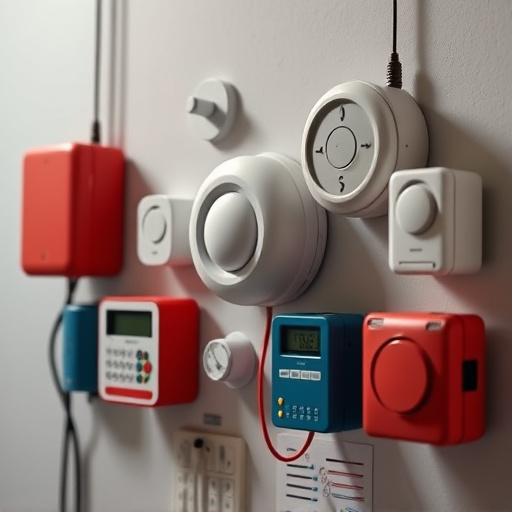Personal safety apps offer crucial tools for self-defense and emergency communication, with high-decibel alarm functions as key features. The Best Personal Alarm Sound Distance should be loud, distinct, and capable of cutting through ambient noise over 50-100 meters to alert bystanders and emergency services promptly. When selecting an app, prioritize easy activation, location sharing, security integration, customizable alerts, regular updates, and strong privacy protections. Best practices include customizing settings for a unique alarm sound, regularly updating the app and contacts list, enabling location sharing only with trusted contacts, maintaining accurate personal info, and familiarizing yourself with panic mode and quick-access features to ensure optimal safety and data security.
Personal safety apps with alarm features have become essential tools for individuals seeking peace of mind in an uncertain world. In this article, we explore the role these apps play in enhancing personal security and offering rapid response mechanisms. From understanding the core functionalities to identifying key features like GPS tracking and panic triggers, we guide you through the process of choosing the right app. We also delve into best practices for optimal use and test the crucial aspect of the best personal alarm sound distance for maximum impact.
- Understanding Personal Safety Apps and Their Alarm Mechanisms
- Key Features to Look for in a Personal Alarm App
- Best Practices for Using Personal Alarm Apps Effectively
- Testing and Evaluating the Best Personal Alarm Sound Distance
Understanding Personal Safety Apps and Their Alarm Mechanisms
Personal safety apps are designed to empower individuals by providing tools for self-defense and emergency communication. These applications offer a range of features, with alarm functions being one of the most vital. When activated, personal safety apps emit high-decibel alarms that can attract attention and deter potential threats. The effectiveness of these alarms lies in their sound quality and distance reach.
The best personal alarm sounds are typically designed to be loud and distinct, ensuring they stand out above ambient noise. Some apps offer customizable alarms, allowing users to choose from a variety of tones and pitches. Additionally, the distance at which these alarms can be heard is crucial. High-quality personal safety apps ensure that the alarm signal reaches nearby bystanders or emergency services, providing an essential layer of protection.
Key Features to Look for in a Personal Alarm App
When choosing a personal safety app with alarm features, several key elements should be top of mind. First and foremost, best personal alarm sound is paramount; you want a loud, distinct, and attention-grabbing noise that can startle potential assailants and alert nearby friends or authorities. The distance at which this alarm can be heard is also crucial; some apps offer sounds tailored for indoor and outdoor environments, ensuring maximum effectiveness whether you’re in a quiet home or a bustling street.
Other important features include easy activation mechanisms, such as simple button presses or voice commands, allowing quick responses during emergencies. Location sharing capabilities, integration with existing security systems, and the option for customizable alerts are also valuable additions. Look for apps that offer regular updates and strong privacy protections to ensure your data remains secure while enhancing your personal safety.
Best Practices for Using Personal Alarm Apps Effectively
When using personal safety apps with alarm features, it’s crucial to adopt best practices for optimal effectiveness. Start by customizing your app’s settings to suit your needs. Choose a distinct and loud personal alarm sound that can attract immediate attention. Ensure you test the alarm in various environments to confirm its audibility at different distances—the best personal alarm sound should be heard clearly up to a reasonable distance, usually 50-100 meters, depending on environmental factors. Regularly update your app and emergency contacts list for seamless functionality.
Location sharing is another critical aspect; enable this feature only with trusted contacts who can respond promptly in case of an emergency. Keep the app updated with accurate personal information, including your regular routine and frequent locations. Additionally, familiarize yourself with the app’s panic mode and quick-access features, ensuring you can activate them swiftly when needed. Regularly review and practice these safety measures to ensure a calm response during actual emergencies.
Testing and Evaluating the Best Personal Alarm Sound Distance
When evaluating personal safety apps with alarm features, one crucial aspect is the best personal alarm sound distance. This metric determines how effective the alarm will be in alerting others to a potential danger. During testing, it’s essential to consider both the volume and clarity of the alarm sound. A high-decibel alarm might not be as useful if the tone is muffled or indistinguishable from ambient noise.
Ideally, personal alarm sounds should be loud enough to pierce through common background noises like traffic, music, or chatter. Additionally, a distinct and easily recognizable chime or siren ensures that even in busy environments, bystanders can quickly discern the emergency signal. Evaluating these factors helps users choose an app with an alarm sound that will maximize its effectiveness in various settings, thereby enhancing personal safety.
Personal safety apps with alarm features offer a powerful tool for individuals to protect themselves in various situations. By understanding the key features, best practices, and testing the optimal best personal alarm sound distance, users can ensure these apps enhance their sense of security. Incorporating such apps into daily life promotes peace of mind, empowering individuals to navigate potentially dangerous scenarios with increased confidence and preparedness.
